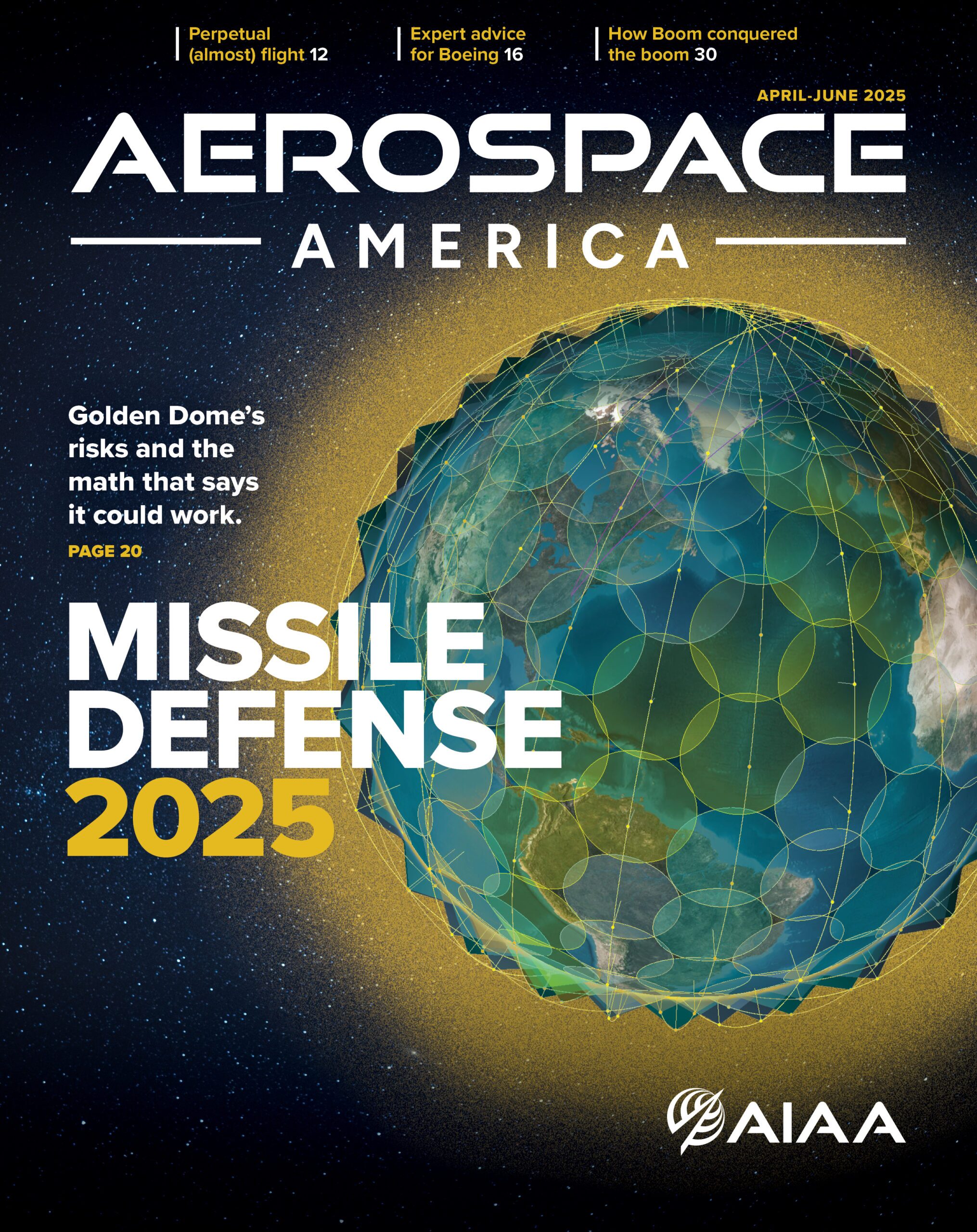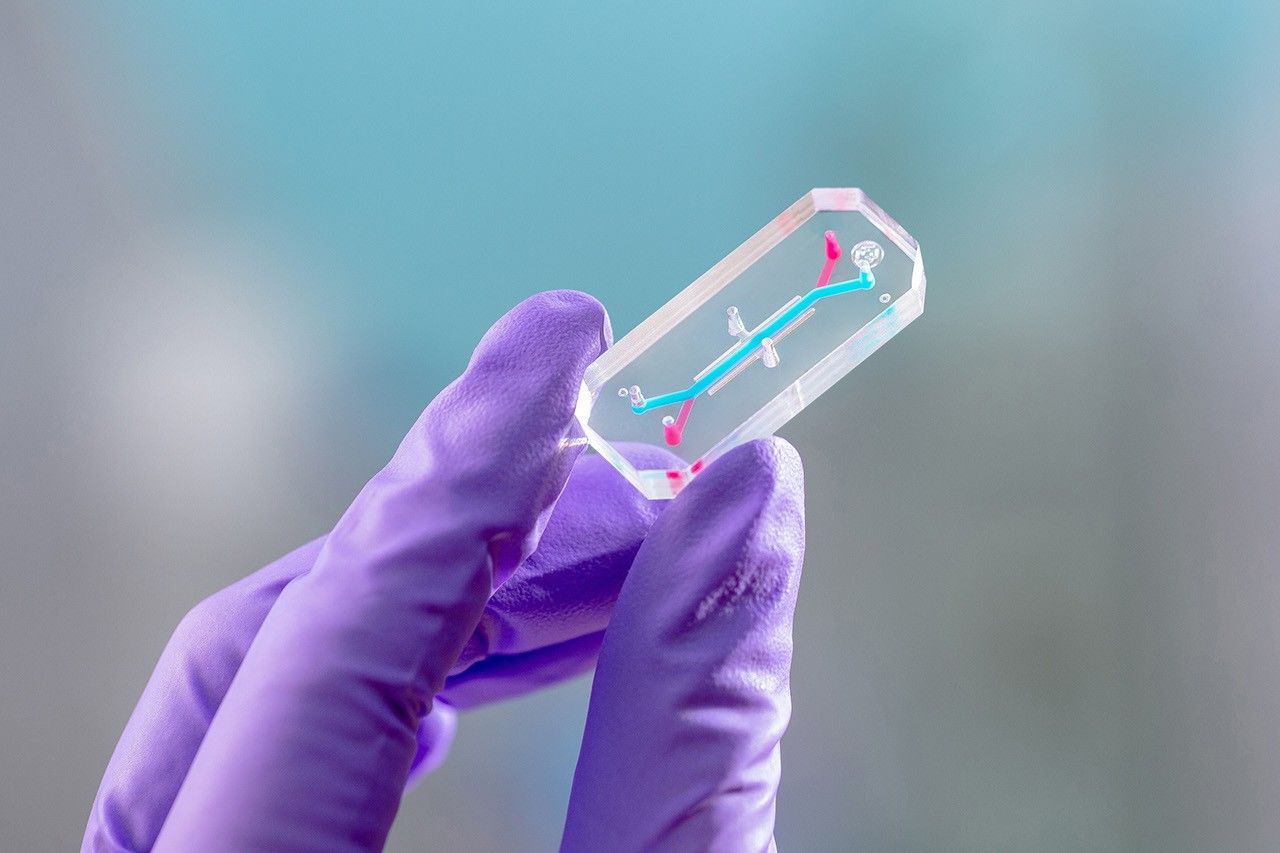Stay Up to Date
Submit your email address to receive the latest industry and Aerospace America news.
This story has been updated to clarify the process of creating organ chips.
NASA has long sent animals, from fruit flies to zebrafish, to space to study how the orbital environment affects them — and, in turn, use that information to better quantify its toll on the human body.
But for its next lunar mission, NASA is weighing a different approach. When an Orion capsule blasts off as early as February carrying four astronauts for the Artemis II flight, also aboard will be organ chips containing samples of lab-grown human tissues.
Through this AVATAR experiment, short for A Virtual Astronaut Tissue Analog Response, NASA and its contractor, Emulate Inc. of Boston, plan to measure the effects of the microgravity and space radiation levels inside the Orion capsule.
Researchers don’t expect this approach to completely replace full-body analysis of humans and animals who have experienced spaceflight. Rather, it’s meant to provide an additional method of gauging how individuals, based on their unique genetics and physiology, might be affected by a trip to deep space — even before they go.
The first step is to extract bone marrow progenitor cells from the astronauts’ blood, from which cells are grown that are similar to bone marrow. These cells are then placed inside various small plastic chips, which are kept at the perfect temperature for the human body: 37 degrees Celsius (98.6 Fahrenheit). A microfluidic system, a microscopic network of channels inside the chip, carries a steady stream of liquids with cellular nutrients and oxygen and also takes away cellular waste. The chips are also referred to as “avatars,” as they are representations of an astronaut’s biology.
One batch of chips will be kept on Earth as a control. The other will be placed aboard the Artemis II Orion capsule, recently named Integrity, inside a self-contained laboratory built by Space Tango of Kentucky. Due to space constraints, the laboratory could be no more than 50 centimeters high, 30 cm deep and 38 cm wide.
Integrity and its crew are to complete a 10-day flight around the moon. Upon their return to Earth, the researchers will retrieve the chips, and the DNA material inside will be “fixed” in a relatively permanent state with a substance similar to formaldehyde. The researchers will analyze them for any differences from the control samples.
This method is expected to provide more relevant, specific data compared to past experiments done with animals and generalized studies conducted with groups of astronauts, said Lisa Carnell, director of NASA’s Biological and Physical Sciences Division. In other words, AVATAR could allow NASA to identify exactly how a particular astronaut’s DNA responds to space, not just astronauts in general.
“Testing with yeast or lab mice or even primates doesn’t exactly mimic humans, but these are human DNA cells,” Carnell said.
NASA isn’t the only U.S. agency that uses this method. Carnell said the Federal Food and Drug Administration allows data from such experiments to be used in investigations of proposed drugs. The same tissue-on-a-chip technology means such investigations may not require human experimentation at initial stages.
In the realm of spaceflight, AVATAR could assist NASA in developing tailored preventive measures for specific astronauts based on individual DNA reactions.
“This is going to really change so much for NASA, in the way that we can understand what’s happening to humans in deep space,” Carnell said. “Imagine if we can load up a bunch of [the chips] and send them into deep space just autonomously. We can either bring them back or have sensors embedded to get telemetry back and understand what’s going on.”
The method and research were pioneered by Donald Ingber, founding director of the Boston-based Wyss Institute at Harvard University. The institute licensed the technology to Emulate, which Ingber helped found in 2014. For AVATAR, Emulate prepared the human tissue and the chips and will oversee the research after Artemis II concludes. NASA leads the experiment and is working with other U.S. agencies, including the Biomedical Advanced Research and Development Authority and the National Center for Advancing Translational Sciences, which is part of the National Institutes of Health.
“This has never been done before, comparing the cells of an astronaut that remain on Earth to cells from the same astronaut exposed to space in this manner,” Ingber told me. “This is a proof-of-concept study to determine if we can use these avatars to accurately determine bone marrow response. Does it mimic what happens in the astronauts?”
He continued: “If it does work, we could make chips from 100 people. You could study men versus women, old versus young. We could tease out what’s due to radiation versus microgravity, because we could expose things on the Earth potentially to forms of radiation that are measured up there to figure out what’s really going on.”
For example, he said, it’s possible that some space travel effects on the body may be related to acceleration on liftoff or landing while others may be more linked to prolonged exposure to microgravity.
“There’s a lot of support for this technology, even if you just look at the fact that it will help us avoid more and more animal testing over time,” Ingber said.
About paul brinkmann
Paul covers advanced air mobility, space launches and more for our website and the quarterly magazine. Paul joined us in 2022 and is based near Kennedy Space Center in Florida. He previously covered aerospace for United Press International and the Orlando Sentinel.
Related Posts
Stay Up to Date
Submit your email address to receive the latest industry and Aerospace America news.




